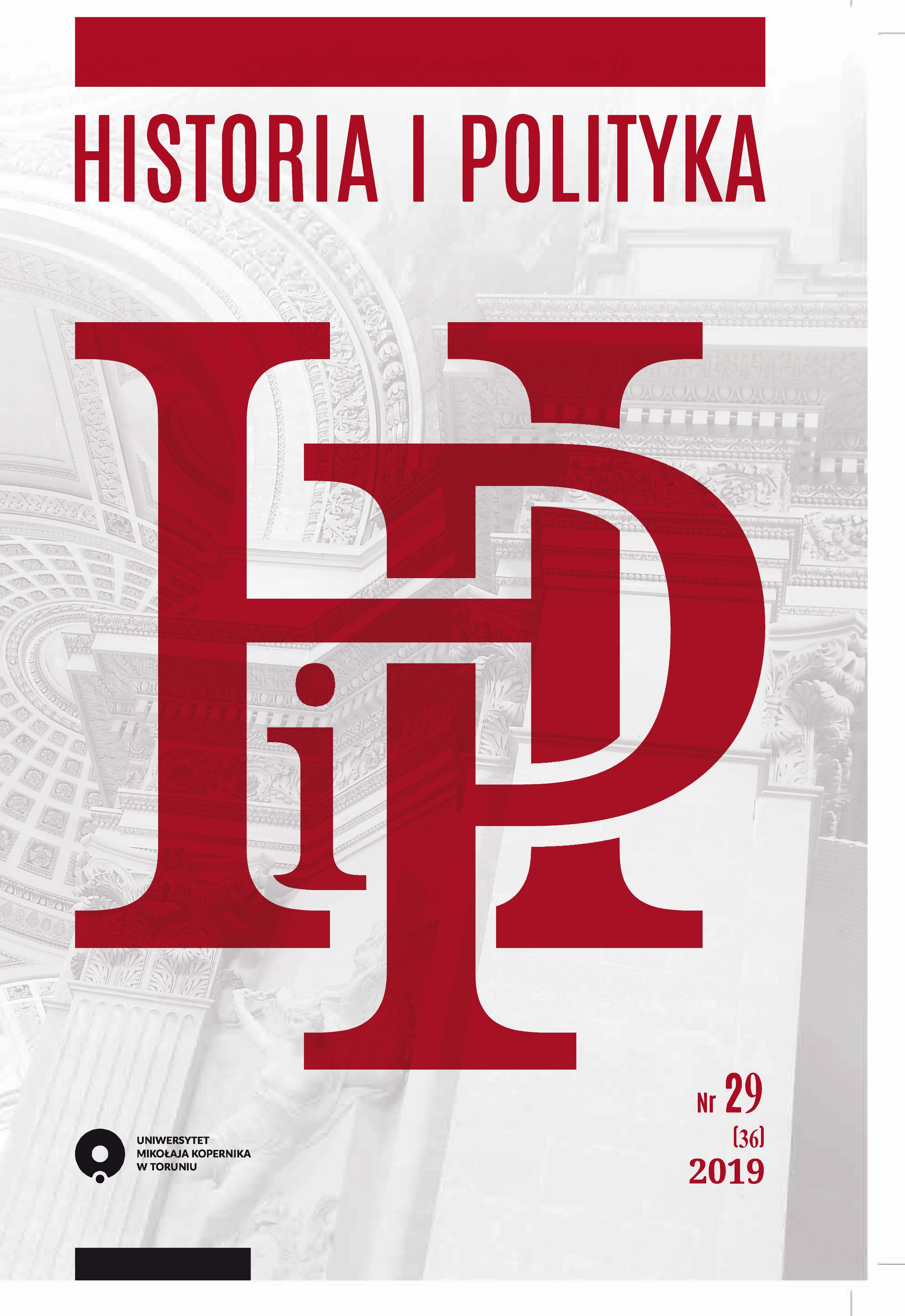Stany Zjednoczone a integracja polityczna, militarna i gospodarcza Europy Zachodniej w pierwszych latach po II wojnie światowej (do 1950 r.). Ameryka nadaje ton i dyktuje warunki (Część II)
DOI:
https://doi.org/10.12775/HiP.2019.023Słowa kluczowe
II wojna światowa, okres powojenny, Europa Zachodnia, Stany Zjednoczone, integracja polityczna, militarna i ekonomiczna, doktryna izolacjonizmu, organizacje zachodnioeuropejskie, rozwój gospodarczy, handel międzynarodowy, pożyczki i kredyty, Plan MarshallAbstrakt
The influence of the US on the forms and course of the integration processes in Western Europe was very strong, especially in the first post-war years. It was the influence of an external force which, being free of the internal contradictions stemming from Western Europe’s interests, had at its disposal real capabilities to impose integration concepts beneficial to itself. Such integration was in line with both the economic and military interests of the United States during this period. The main reasons prompting Western European countries in the first post-war years to accept the solutions suggested by the United States were: the said countries’ difficult economic situation, fear of the communist parties’ coming to power, and the reluctant (hostile) attitude towards the USSR and the communist bloc. The combination of these causes served to temporarily neutralize the centrifugal tendencies and muted the divergence of interests between the individual countries of Western Europe. Such motives of integration also influenced the character of the emerging Western European political, military and economic organizations. The economic development of Western European countries, whose sources, in addition to the Marshall Plan, should be seen also in other factors, later led to a shift of integration initiatives from the American side to the European one. From a formal point of view, the effects of US policy in the period up to 1950 entailed: the establishment of NATO, the creation of the OEEC and the signing of the agreement on the EUP.
Bibliografia
Byrnes, J. F. (1947). Speaking Frankly. New York: Harper&Brothers.
Całus, A. (1964). Nieudane próby utworzenia Europejskiej Wspólnoty Obronnej oraz Europejskiej Wspólnoty Politycznej. Przegląd Zachodni, 3, 94–125.
Claude, H. (1950). Plan Marshalla. Warszawa: Państwowy Instytut Wydawniczy.
Common Market and American Business. (1962). New York.
Common Market. New Frontiers for American Business. An AMA Management Report. (1968). New York.
Diebold, W. (1959). The Schuman Plan. The Study in Economic Cooperation 1950–1959. New York: Council of Foreign Relations.
Documents on Foreign Relations, Vol. X. (1949). Princeton: Princeton University Press.
European Payment Union and the Rules of Commercial Policy to be Followed by Member Countries. (1950). Paris: CEEC Documents.
Foreign Assistance Act of 1948, 80th Congress, 2nd session. (1949). Washington.
Frank, I. (1961). The European Common Market. An Analysis of Commercial Policy. New York: Prager.
Gerbet, P. (1996). European Integration as an Instrument of French Foreign Policy. W: F. H. Heller, J. R. Gillingham (red.). The United States and the Integration of Europe. New York: St. Martin’s Press.
Interim Report on the European Recovery Programme. (1948). Paris: OEEC.
Kirsanow, W. (1968). Die USA und Westeuropa. Berlin.
Klepacki, Z. (1969). Zachodnioeuropejskie organizacje międzynarodowe. Warszawa: Książka i Wiedza.
LaFeber, W. (2003). The United States and Europe in an Age of American Unilateralism. W: L. Moore, M. Vaudagna (red.). The American Century in Europe. Ithaca–London: Cornell University Press.
Łychowski, T. (1949). Krach tzw. Planu Marshalla i jego skutki. Sprawy Międzynarodowe, 3–4.
Nowak, A. (1965). Koncepcje integracji Europy Zachodniej na tle procesów rozwoju ekonomicznego. Poznań: Instytut Zachodni.
Nowak, Z. (1965). Niemiecka Republika Federalna a integracja ekonomiczna Europy Zachodniej. Przegląd Zachodni, 1.
Piquet, M. S. (1968). First Effects of the Common Market. The Impact of Changing Tariffs on USA. W: The European Common Market, New Frontiers for American Business, An AMA Management Report. New York.
Procurement Authorisations and Allotments Mutual Security Agency. (1952). Division of Statistics and Report, 29 February 1952.
Rostow, W. W. (1960). The US in the World Arena. New York: Harper&Brothers.
Schmitt, H. A. (1962). The Path to European Union. From the Marshall Plan to the Common Market. Louisiana State University Press.
Sołdaczuk, J. (1963). Integracja gospodarcza we współczesnym kapitalizmie. Warszawa: Książka i Wiedza.
Stebbins, R. P. (1950). The U.S. in World Affairs 1949–1950. New York: Harper&Brothers.
The European Common Market, New Frontier for American Business, An AMA Management Report. (1968). New York.
The Impact of Changing Tariffs on USA. (1968). W: The European Common Market, New Frontier for American Business, An AMA Management Report. New York.
Truman, H. S. (1956). Years of Trial and Hope 1946–1953. Holder and Stoughton.
Van der Beugel, E. W. (1966). From Marshall Plan to Atlantic Partnership. New York.
Zdziechowski, J. (1952). Główne zagadnienia ekonomii, gospodarcza i polityczna analiza planu Schumana. Londyn.
Opublikowane
Jak cytować
Numer
Dział
Licencja
Uniwersytet Mikołaja Kopernika w Toruniu respektuje prawo do prywatności i ochrony danych osobowych autorów.
Dane autorów nie są wykorzystywane w celach handlowych i marketingowych. Redaktorzy i recenzenci są zobowiązani do zachowania w poufności wszelkich informacji związanych ze złożonymi do redakcji tekstami.
Autor, zgłaszając swój tekst wyraża zgodę na wszystkie warunki i zapisy umowy licencyjnej (określającej prawa autorskie) z Uniwersytetem Mikołaja Kopernika w Toruniu.
Statystyki
Liczba wyświetleń i pobrań: 0
Liczba cytowań: 0



